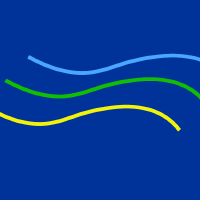Topic Menu
► Topic MenuTopic Editors



Drones for Coastal and Coral Reef Environments
Topic Information
Dear Colleagues,
Understanding complex coastal processes and interactions between land, sea, and human communities is of primary concern. Coastal and coral reef systems are highly dynamic environments and very susceptible to the ongoing impacts of climate change. Mapping, monitoring, and modeling these systems is essential to better understand, predict and facilitate evidence-based management. However, biophysical datasets at appropriate spatial and temporal scales are seldom available due to the inherent challenges of working in coastal settings. Remotely sensed data, such as drone-derived imagery and elevation, have increased the flexibility, cost-effectiveness, and accuracy of the multidimensional coastal data (3D plus time) required to better understand and manage these systems and produce realistic numerical models that predict and help to mitigate coastal hazards such as flooding and erosion. This Special Issue seeks to collate the latest research in the application of remote sensing and drone technology to coastal environments including, but not limited to, sandy beaches, coral reefs, mangroves, saltmarshes, seagrass, or rocky coastlines. We invite contributions that address one or more of the following topics:
- Semi-automatic classification and/or change detection approaches;
- Challenges associated with mapping the land–ocean interface;
- Accuracy of derived data and numerical models;
- Cost-effectiveness assessments of coastal mapping and monitoring;
- Novel platform/sensors for coastal applications.
Dr. Javier Leon
Dr. Daniel L. Harris
Dr. Stephanie Duce
Topic Editors
Keywords
- drones
- Structure-from-Motion
- remote sensing
- coastal morphodynamics
- coastal monitoring
- coastal geomorphology
- bathymetry
- coral reefs
- dunes
- mangroves
- seagrass
Participating Journals
| Journal Name | Impact Factor | CiteScore | Launched Year | First Decision (median) | APC |
|---|---|---|---|---|---|

Coasts
|
- | - | 2021 | 32.3 Days | CHF 1000 |

Drones
|
4.4 | 5.6 | 2017 | 21.7 Days | CHF 2600 |

Geosciences
|
2.4 | 5.3 | 2011 | 26.2 Days | CHF 1800 |

Journal of Marine Science and Engineering
|
2.7 | 4.4 | 2013 | 16.9 Days | CHF 2600 |

Remote Sensing
|
4.2 | 8.3 | 2009 | 24.7 Days | CHF 2700 |

Sensors
|
3.4 | 7.3 | 2001 | 16.8 Days | CHF 2600 |

MDPI Topics is cooperating with Preprints.org and has built a direct connection between MDPI journals and Preprints.org. Authors are encouraged to enjoy the benefits by posting a preprint at Preprints.org prior to publication:
- Immediately share your ideas ahead of publication and establish your research priority;
- Protect your idea from being stolen with this time-stamped preprint article;
- Enhance the exposure and impact of your research;
- Receive feedback from your peers in advance;
- Have it indexed in Web of Science (Preprint Citation Index), Google Scholar, Crossref, SHARE, PrePubMed, Scilit and Europe PMC.

